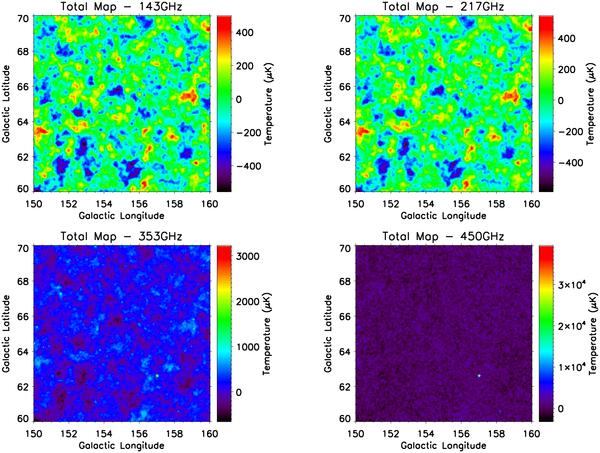Fig. 2

Total maps predicted at the four frequency bands of OLIMPO: these are the sum of the CMB anisotropies, SZ effect, dust, and FIRB components plus the radio and infrared sources and the expected noise in the four bands. Signals are expressed in μK. We note that the CMB anisotropy component dominates the 143 and 217 GHz channels, while the 353 and 450 GHz channels are dominated by Galactic dust. The far infrared background contribution is comparable to the Galactic dust one, but seeing it is more difficult since it lacks of structures at scales larger than beam size. However, when adding the point sources, these loom over the other components, particularly at 450 GHz.
Current usage metrics show cumulative count of Article Views (full-text article views including HTML views, PDF and ePub downloads, according to the available data) and Abstracts Views on Vision4Press platform.
Data correspond to usage on the plateform after 2015. The current usage metrics is available 48-96 hours after online publication and is updated daily on week days.
Initial download of the metrics may take a while.


